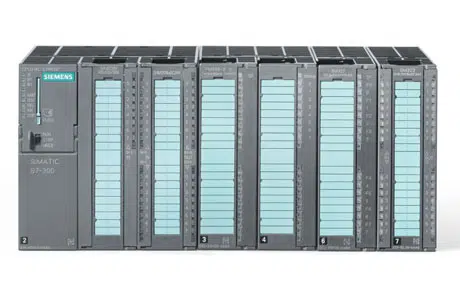What Is LOGO Logic?
Key Takeaway
LOGO logic refers to the programming system used in Siemens LOGO PLCs for small-scale automation tasks. It uses a graphical interface where function blocks are connected to define the operation of automation processes. This approach simplifies programming, making it accessible even to users with limited technical knowledge.
LOGO logic is designed for tasks like controlling lights, motors, or pumps in both residential and industrial environments. The system uses LOGO! Soft Comfort software, which allows you to drag and drop blocks, simulate the program, and test the logic before implementation. Its intuitive design supports efficient process control and customization, making it a preferred choice for basic automation solutions.
Introduction to LOGO Logic Programming
LOGO Logic programming is a user-friendly approach developed by Siemens to simplify automation tasks. It revolves around creating logical instructions for controlling processes like switching, timing, and monitoring. The core concept is to replace traditional hardwired logic systems with flexible, software-based programming.
This intuitive programming method is ideal for small-scale automation systems. By using graphical interfaces, users can easily design, simulate, and test control programs. It’s especially beneficial for those new to automation, as the drag-and-drop functionality and predefined logic blocks eliminate complex coding requirements. LOGO Logic not only reduces development time but also ensures precision and adaptability for various applications.

Basic Components of LOGO Logic and Function Blocks
At the heart of LOGO Logic are its function blocks, which are preconfigured logical building blocks for automation tasks. These include AND, OR, timers, counters, and comparators, allowing users to create programs for specific needs without writing detailed code.
The graphical programming environment makes it simple to connect these blocks, defining the relationships and sequences for automation processes. The modular structure supports additional I/O modules and communication modules, expanding its capabilities. By integrating hardware components like switches, sensors, and actuators with LOGO Logic, users can achieve seamless control over processes, whether it’s for industrial or residential setups.
You May Like to Read
How LOGO Logic Simplifies Automation Programming
One of the standout features of LOGO Logic is its ease of use. Instead of dealing with complex programming languages, users work with a drag-and-drop interface in the LOGO Soft Comfort software. This tool allows you to visually design logic by linking function blocks, making the process intuitive even for beginners.
The simulation feature is another advantage, enabling users to test their logic programs before implementing them in real-world applications. This minimizes errors and ensures the program works as intended. For small projects like managing HVAC systems or controlling irrigation, LOGO Logic eliminates unnecessary complexity, empowering users to focus on efficiency and results.
Applications of LOGO Logic in Industrial and Residential Settings
LOGO Logic programming is versatile, finding applications across industrial and residential domains. In small industries, it’s used for control systems like conveyor belts, basic production lines, and pump management. Its compact size and customizable programming make it ideal for automating repetitive tasks.
In residential settings, LOGO Logic is at the forefront of smart home solutions. From automating lighting systems to managing security controls and irrigation systems, it offers a cost-effective way to enhance convenience and efficiency. By integrating with IoT systems, LOGO Logic can even enable remote monitoring and control, making it a favorite for homeowners looking to simplify their lives.
Advanced Features of LOGO Logic for Customization
LOGO Logic goes beyond basic automation by offering advanced features that allow users to tailor programs to specific needs. For instance, the ability to integrate cloud-based solutions means users can monitor and control systems remotely. The modular design supports expansion, enabling additional inputs and outputs for more complex projects.
Another notable feature is its energy-efficient programming, which optimizes processes to reduce power consumption. LOGO Logic also supports communication protocols like Ethernet, making it compatible with modern automation systems. With these advanced capabilities, LOGO Logic ensures scalability and future-proofing, making it an excellent choice for evolving needs.
Conclusion
LOGO Logic offers an accessible yet powerful platform for small-scale automation tasks. Its intuitive programming, advanced features, and versatility make it a valuable tool for industrial and residential applications alike.
